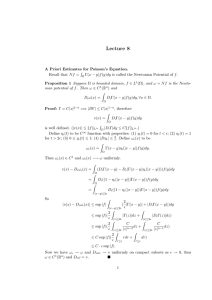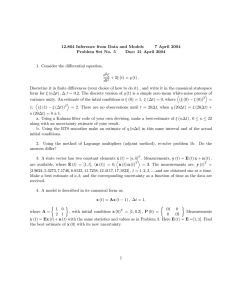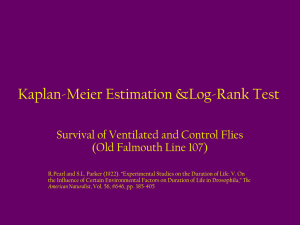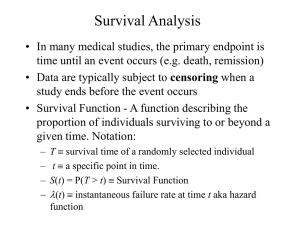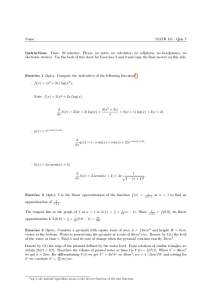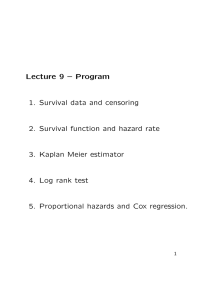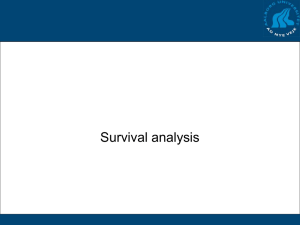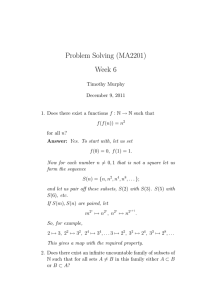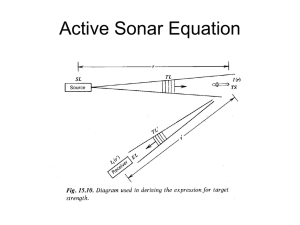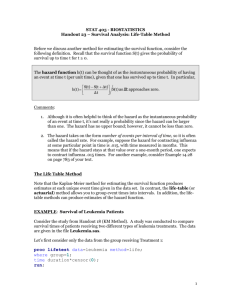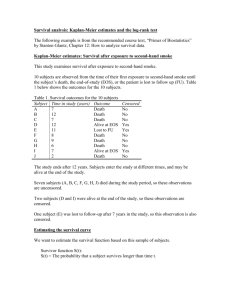7.2 Estimation of survival function
advertisement
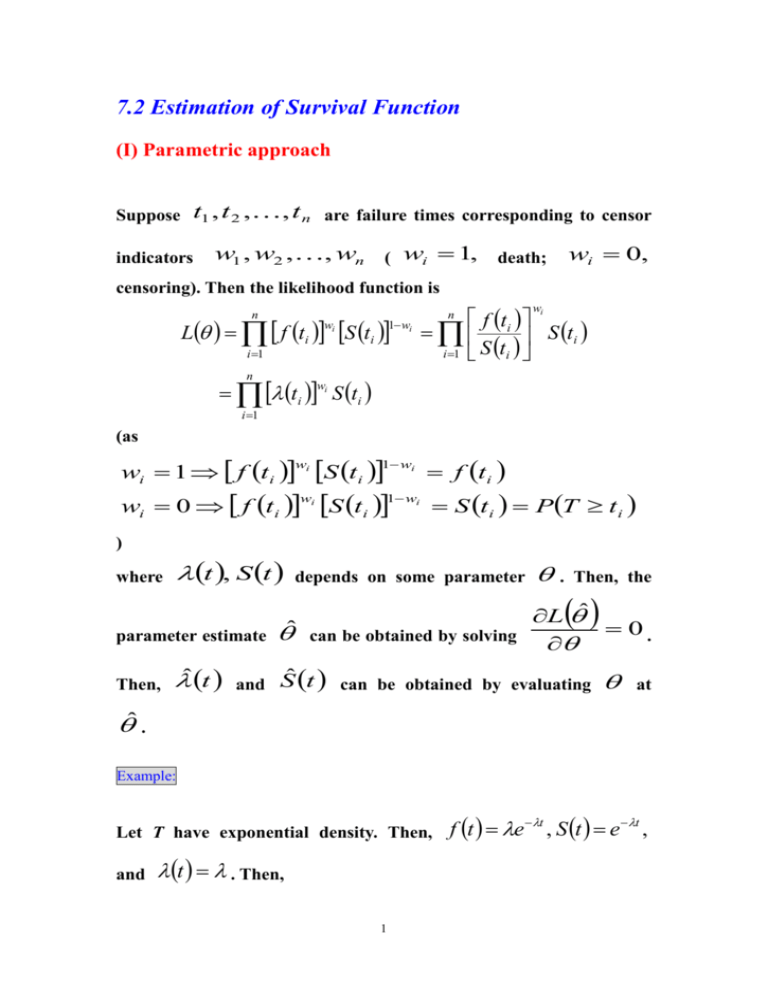
7.2 Estimation of Survival Function (I) Parametric approach Suppose t1 , t 2 ,, t n are failure times corresponding to censor indicators w1 , w2 ,, wn ( wi 1, death; wi 0, censoring). Then the likelihood function is n f t i S ti i 1 S t i n L f ti S ti 1 wi wi i 1 n wi ti i S ti w i 1 (as wi 1 f t i S ti 1 w w 1 w 0 f t i S t i wi wi i i i f t i S t i P T t i ) t , S t where depends on some parameter . Then, the L ˆ 0. parameter estimate ˆ can be obtained by solving Then, ̂ t and Ŝ t can be obtained by evaluating at ˆ . Example: Let T have exponential density. Then, and t . Then, 1 f t e t , S t e t , n L wi e ti i 1 and further l log L n w i 1 i log ti n n wi log ti i 1 i 1 Thus, n l w i i 1 n n t i 0 ˆ i 1 w i i 1 n t i 1 . i 1 E T the estimate for mean survival (Intuitively, n 1 ˆ time is t i 1 n i wi ) Then, Sˆ t êt . For example, in i 1 the motivating example, n ˆ w t i 1 Then, i i 1 n 1111 4 6 7 9.5 7 10 7 6 11 63.5 . i Sˆ t e 4t 63.5 . 2 (II) Nonparametric approach Let t (1) t ( 2 ) t ( m ) be death times. The number of individuals who alive just before time t ( j ) , including those who are about to die at this time, will be denoted n j , for j 1,2,, m , and d j will denote the number who die at this time. Thus, we have the following table: t (1) t( 2) n1 n2 d1 d2 … t( m) … nm … dm t t (1) t (2) t(k ) t ( k 1) t (m ) Then, for t ( k ) t t ( k 1) , nj d j ˆ S t nj j 1 k nk d k nk dk d1 d2 1 1 1 n1 n2 nk 1 ˆ t1 1 ˆ t 2 1 ˆ t k n1 d1 n1 n2 d 2 n2 3 Ŝ t is referred to as Kaplan-Meier estimate. Note: Intuitively, if T is a discrete random variable taking values t (1) t (2) with associated probability function PT t(i ) , i 1, 2, , then t(i ) PT t(i ) | T t(i ) f t(i ) S t(i ) . Then, for t ( k ) t t ( k 1) , t t (1) t (2) t(k ) t ( k 1) t (m ) S t PT t P T t( k 1) P T t( 2 ) P T t( 3) P T t( k 1) P T t(1) P T t( 2 ) P T t( k ) P T t(1) P T t(1) P T t( k ) P T t( k ) P T t P T t (1) (k ) P T t(1) P T t( 2 ) P T t( k ) 1 1 1 P T t P T t P T t (1) ( 2 ) ( k ) 1 t(1) 1 t( 2 ) 1 t( k ) 4 since P T t (1) 1 . Example (continue): In the motivating example, we have t(i ) 6 ni 8 di 1 7 6 2 11 1 1 Thus, 1, 0 t 6 n1 d1 8 1 0.875, 6 t 7 n 8 1 Sˆ t n1 d1 n2 d 2 8 1 6 2 7 , 7 t 11 n1 n2 8 6 12 n1 d1 n2 d 2 n3 d 3 8 1 6 2 1 1 0, 11 t n1 n2 n3 8 6 1 0.6 0.4 0.2 0.0 Survival function 0.8 1.0 The plot of the survival function is 0 2 4 6 t 5 8 10
